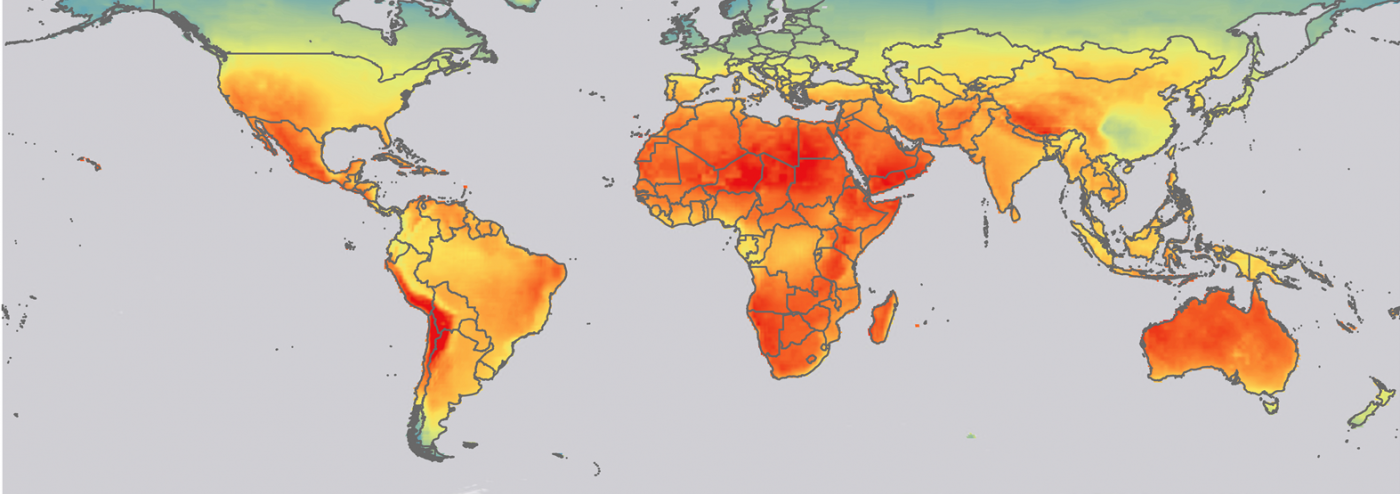
PV Potential
Global Photovoltaic Potential Modelling
Solar photovoltaic (PV) energy is fundamental for decarbonizing the global economy and supporting the renewable energy transitions that are needed to combat climate change. Potential solar power production at a given location is a function of climatic variables that will change over time and so climate change needs to be accounted for in PV potential estimation. We develop global gridded estimates of PV potential between 2020 and 2100 as a function of spatial, climatic, technological and infrastructural conditions.
We find a global technical potential of 175 111 T W h yr-1 in 2050, which changes by between ca. -19% (high-emission scenario) and +16% (low-emission scenario), with larger geographic variations within these scenarios. Solar power can make an important contribution to energy production over the coming decades and the demand for renewable energy could be met by PV deployment on between 0.5% and 1% of the global land area, provided its deployment accounts for the location-specific impacts of climate change.
Data set: Global Gridded Estimates of PV potential
The dataset is a gridded estimate of PV potential for the period 2020 – 2100 across the climate change scenarios (RCP2.6, RCP4.5, RCP6.0 and RCP8.5).
Format: GeoTIFF and Netcdf
Temporal period: 2020-2100
Spatial resolution: 0.5°
Temporal resolution: 10 years
Unit: kWh
Contributors: Ankita Saxena, Calum Brown, Almut Arneth and Mark Rounsevell
Access data: Data is open access and can be downloaded for academia and research purposes from here: https://osf.io/8uv2s/.
Publications:
Saxena et al 2023 Environ. Res. Lett. https://doi.org/10.1088/1748-9326/acf86f